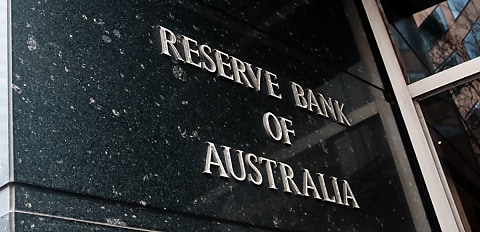The Reserve Bank of Australia (RBA) has released the minutes from its February monetary policy meeting, when it held the cash rate at 4.35 per cent.
The meeting was the first to be held with the new two-day format - and included more attendees, including the chief communications officer.
According to the minutes, the members of the board acknowledged that inflation in Australia had “moderated”, but they were still uncertain about the economic outlook.
While inflation had moderated in the past months, the RBA noted that inflation is still high and it was therefore “not yet possible to rule in or out further increases in interest rates”.
Indeed, the minutes show that the members considered raising the cash rate by a further 25 bps, but ultimately decided to leave the rate unchanged.
This echoed Michele Bullock’s comments at the press release immediately after the meeting.
The minutes read: “The case to raise the cash rate further centred on the observation that it would take some time for inflation to return to target and the labour market to full employment.
“Inflation was expected to take a further two years or so to return towards the midpoint of the target range under the central forecast. This was consistent with the staff’s assessment that aggregate demand remains above the economy’s supply potential.
“Members noted that an increase in the cash rate target at this meeting could slow the growth of demand further and reduce the risk of inflation not returning to target in an acceptable time frame.
“Increasing the cash rate target now would not prevent the board from easing monetary policy if the economy were to weaken more sharply than envisaged.
“The case to leave the cash rate target unchanged at this meeting centred on the observation that the risk of inflation not returning to the board’s target within a reasonable time frame had eased."
The RBA minutes also revealed that mortgage payments as a percentage of household disposable income had risen to a “historical high”. The members noted that this would continue to rise as mortgagors previously on low fixed-rate terms roll into higher interest rates.
Extra repayments into mortgage offset accounts had declined since 2022, the board noted, but were increasing in the second half of 2023.
The board also reflected that the amount of new mortgages written had increased over the previous year, as national housing prices have continued to rise.
However, total household debt payments did not reach its estimated peak, as personal credit has declined significantly since 2008.
The minutes stated that the members’ target for inflation to return to 2–3 per cent is in 2025 and will return to the midpoint in 2026. This is dependent on “inflation expectations remaining anchored”.
Lender economists have noted the release of the minutes, with the Commonwealth Bank of Australia (CBA) stating that the board’s decision to hold the cash rate was a “straightforward” one.
CBA's economist Gareth Aird commented: “It is also important to note that the board did not consider the case to cut that cash [rate]. It is too early for the board to contemplate such a policy move or to signal rate rates could be potentially cut as the focus still remains on bringing inflation down.
“While the on-hold decision was universally anticipated in February, we expected the board to still debate the case to raise the cash rate.
“It would have been inconsistent messaging if the board had not debated the case to raise the cash rate.”
CBA has forecast that rate cuts are likely to begin in September 2024 and may drop 75 bps over late 2024. It expects a further 75-bp drop in early 2025, reducing the cash rate to 2.85 per cent.
Westpac Group's chief economist Luci Ellis noted that while the minutes were marginally longer this month given the longer meeting, most of the additional text was "devoted to some discussion about messaging".
She noted that the minutes drew attention to the decline in non-housing services inflation, attributing this to easing labour market conditions and an improved balance between demand and supply.
"On the face of it, this link points to reason for optimism that Australia might see a similar decline in non-housing services inflation with only a minor increase in unemployment. While the RBA’s assessment of labour market conditions goes beyond the unemployment rate, it would be unusual for overall conditions to ease significantly without some increase in this measure. At this point, most peer economies have seen only a small (or in the euro area as a whole, non-existent) increase in unemployment. This raises the question of just how far unemployment needs to rise to achieve the desired disinflation. Some overseas experience would suggest not much," she said.
Ms Ellis concluded: "Overall, this month’s minutes did not add much information to the raft of RBA written communication and Parliamentary appearances in the past two weeks. We continue to expect the RBA to be on hold for a number of months before beginning to cut rates later in the year."
Westpac also expectes the first rate cut will come in September, but noted that there are "considerable uncertainties in the outlook".
ANZ echoed similar sentiments, expecting the board to maintain a “tightening bias” - but suggested the RBA would make its first rate cut in November 2024.
NAB has estimated that inflation should return to just over 3 per cent by the end of 2024.
The major bank stated: “By November, the combination of higher unemployment and inflation nearing the target range should be enough for the RBA to begin to move, with the cash rate gradually cut back to around 3 per cent by end-2025.”
[Related: RBA reveals looming uncertainties around inflation forecast]
